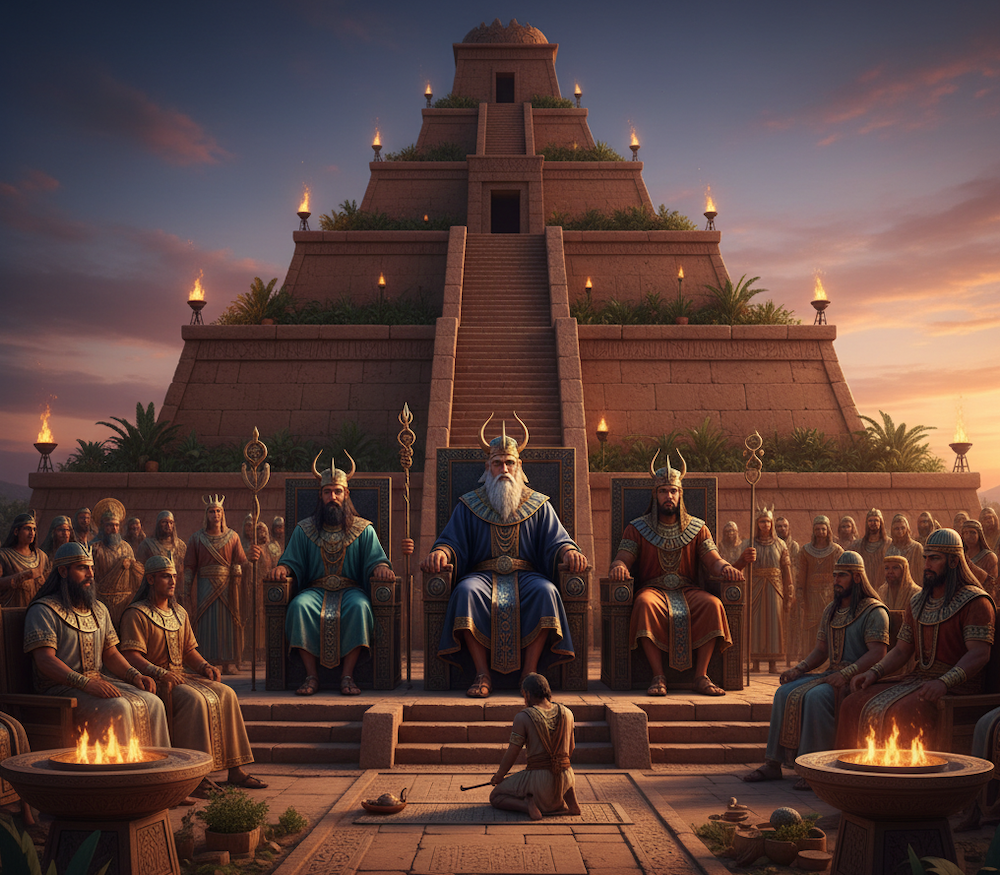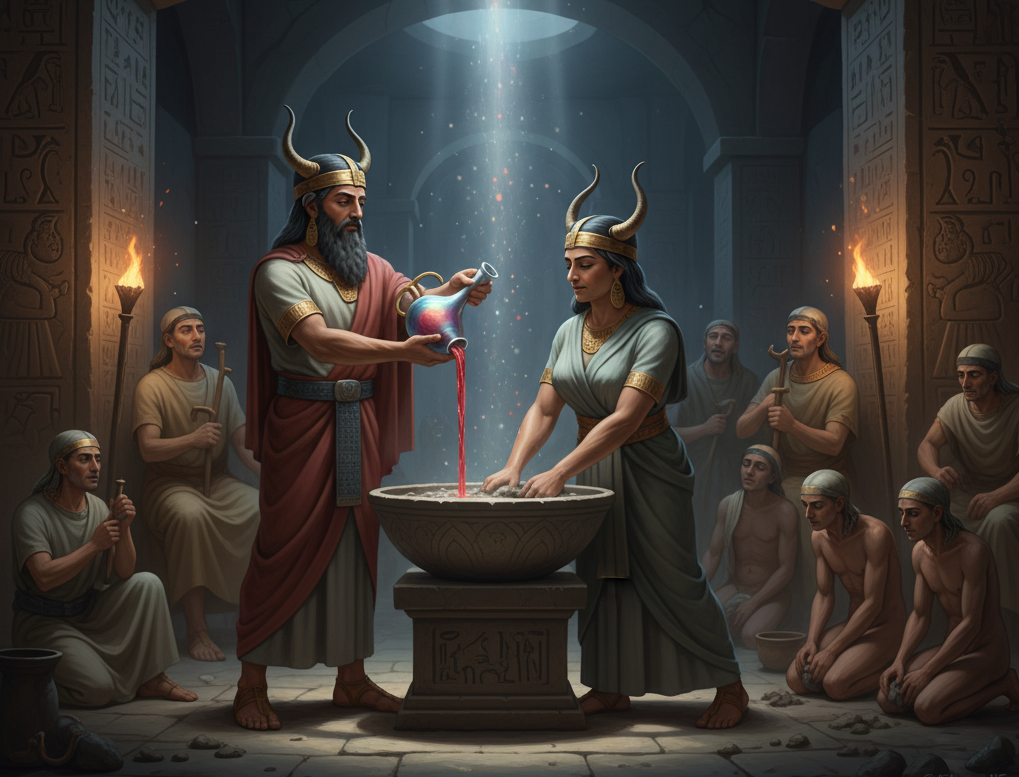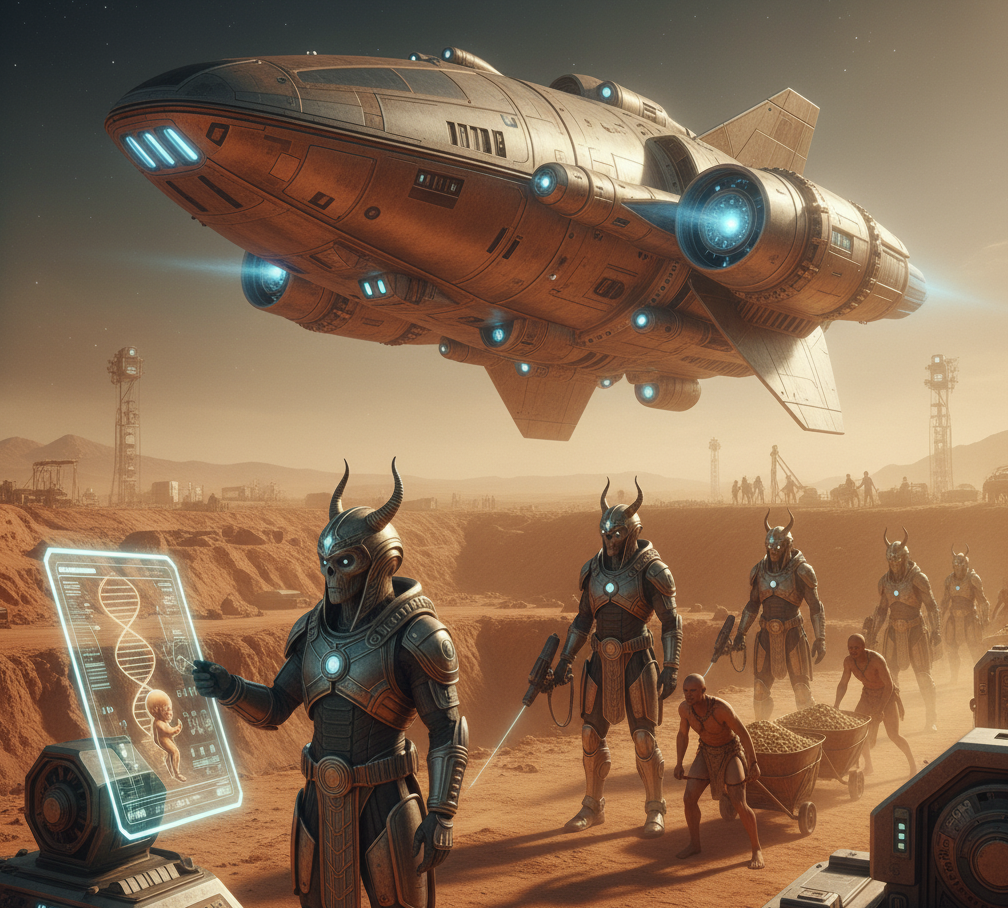The ancient civilizations of Mesopotamia have left behind a rich tapestry of myths, legends, and religious texts that continue to fascinate scholars and enthusiasts alike. One of the most interesting parts of Sumerian mythology is the Anunnaki, a group of gods whose stories have led to both scholarly debate and popular theories about aliens visiting Earth in the past. This in-depth study looks at how these mysterious beings have been seen throughout history, in myths, and in modern times.
The Historical Context: The Civilization of Ancient Mesopotamia
The Sumerian civilization, which began around 3500–3000 BCE in what is now southern Iraq, was one of the first complex societies in history. This area, which is between the Tigris and Euphrates rivers, was the birthplace of many important inventions, such as cuneiform writing, the wheel, and advanced city planning. The Sumerians created a complicated polytheistic religion that would have a big impact on later Mesopotamian cultures.
Archaeological evidence indicates that Sumerian written history dates back to circa 2700 BCE, with Enmebaragesi of Kish recognized as the earliest authenticated king. The civilization's religious practices revolved around enormous temple complexes known as ziggurats, where priests conducted intricate rituals to venerate their pantheon of deities.
Learning about the Anunnaki in Old Mesopotamian Religion
In real Sumerian religious texts, the Anunnaki (which means "offspring of Anu") were a specific group of gods in the large Mesopotamian pantheon. The term referred to the highest-ranking gods in the divine hierarchy, which usually included about fifty major gods. However, some texts say that by the end of the third millennium BCE, there were as many as 3,600 divine beings.

The Divine Hierarchy
The Mesopotamian pantheon was set up like a divine court, with clear levels of authority:
Anu (An): The highest sky god and the father of the gods, he is the ruler of the heavens.
Enlil: The god of wind, storms, and the earth who became the active ruler of both gods and people.
Enki (Ea): The god of water, wisdom, and creation, and the one who keeps divine knowledge safe.
Ninhursag: The goddess of the earth who is linked to motherhood and fertility.
The Anunnaki were the divine council for these four main gods, who were the center of early Sumerian religion. The Anunnaki's traditional role was to decide the fates of gods and humans, acting as judges in the divine realm.
How the Idea of the Anunnaki Changed
The comprehension and function of the Anunnaki transformed considerably over millennia. In ancient Sumerian writings, they were powerful gods who lived in the sky. By the Old Babylonian period (around 2000–1600 BCE), many Anunnaki had been demoted to ruling the underworld and judging the dead instead of taking part in things that happened on Earth.
The Creation Myths: Where Humans Came From
The creation stories that tell how people came to be are very important to Anunnaki mythology. The most important of these stories can be found in the Atrahasis Epic and other Sumerian creation myths.
The Epic of Atrahasis
This important Mesopotamian text, which dates back to about 1700 BCE, gives a full account of how humans were made. The story says:
The Igigi, or lesser gods, got tired of doing all the hard work to keep the universe in order. The great god Enki came up with a solution to their complaints: he made people to work for the gods. People were made from clay mixed with the blood of a god who had been killed, which gave them both earthly and divine qualities.

The Sumerian Story of Creation
The Sumerian version, which can be found in texts like "Enki and Ninmah," goes into more detail about how the world was made. Ninmah, the goddess, helps Enki shape the first people out of primordial clay. Each person is made to do a specific job in the divine economy. The myth stresses that humans were made to do the gods' physical work.
The Story of the Great Flood
One of the most important Anunnaki stories is about the great flood. It shows up in many Mesopotamian texts and is very similar to the story of Noah in the Bible.
The Decision of God
The Atrahasis Epic says that the noise of people was so loud that it woke up Enlil, the king of the gods. So, Enlil decided to wipe out all of humanity with a huge flood. But Enki, who cared about his creations, told a good man named Atrahasis (which means "very wise") about the disaster that was about to happen.
The Covenant and Survival
Following Enki's detailed instructions, Atrahasis built an ark that saved his family and representatives of all animal species. When the flood stopped and Atrahasis made sacrifices, the gods understood that they needed people to worship and feed them. This resulted in a new covenant that set limits on how many people could be born by using natural death and infertility.
The Ancient Astronaut Theory and Zecharia Sitchin
The contemporary reinterpretation of Anunnaki mythology as evidence for ancient extraterrestrial visitation primarily originates from the contentious work of Zecharia Sitchin (1920-2010). Sitchin, an author with a background in economics rather than archaeology or linguistics, suggested a radical new way to read Sumerian texts in his series of books that started with "The 12th Planet" (1976).
Sitchin's Theory About Aliens
Sitchin said that the Anunnaki were not gods from myths but real aliens from a planet called Nibiru. His theory says that:
- Nibiru goes around the Sun in an elliptical path that takes 3,600 years
- The Anunnaki came to Earth about 450,000 years ago
- Their main job was to mine gold to fix the planet's bad atmosphere
- They changed the DNA of modern humans by mixing it with that of early hominids
- The first human made was called "Adamu," and they were meant to be workers

The Genetic Engineering Assertion
Sitchin suggested that the Anunnaki employed advanced biotechnology to alter existing hominid species, potentially Homo erectus, to produce Homo sapiens, rather than crafting humans from clay. This genetic manipulation is said to explain why humans evolved so quickly and have better brains than other primates.
Critique from Scientists and Scholars
The ancient astronaut theory, encompassing Sitchin's interpretation of the Anunnaki, is met with significant repudiation from the scientific and academic communities.
Problems with Archaeology and History
Lack of Physical Evidence: Even though people say that aliens have advanced technology, there is no archaeological evidence for the advanced tools, spacecraft, or alien artifacts that would be expected from such visits.
Misunderstanding of Human Development: Archaeological evidence unequivocally illustrates the incremental evolution of human civilization via natural processes, devoid of extraterrestrial influence.
Translation Errors: Experts in Assyriology and cuneiform have found many mistakes in Sitchin's work that lead to wrong translations and meanings.
Objections from Astronomy
Nibiru's Impossibility: NASA scientists and astronomers have made it clear that there is no such planet in our solar system. Astronomers are looking into a possible Planet X that is very different from Sitchin's Nibiru and does not pose a threat to Earth.
Orbital Mechanics: A planet that followed Nibiru's proposed orbit would have messed up the stable orbits of planets in the inner solar system billions of years ago.
The Cultural Impact and New Ways of Looking at It
Even though scientists don't agree with it, the idea that aliens visited Earth in the past has become very popular in culture, affecting TV shows, movies, and alternative history groups.
Why the Theory Stays Strong
There are a number of reasons why the theory is still popular:
Wonder and Mystery: The accomplishments of ancient civilizations naturally evoke awe, prompting some individuals to pursue extraordinary explanations.
Underestimating Ancient Skills: People today often don't give ancient civilizations enough credit for their creativity and skills.
Pattern Seeking: The human tendency to look for patterns and links, even when they aren't there.
Anti-establishment Sentiment: Not trusting schools and universities.
Questions of Ethics
Scholars have identified significant ethical concerns pertaining to the ancient astronaut theory:
Cultural Supremacy: This theory often suggests that ancient civilizations outside of Europe couldn't have done what they did without help from aliens.
Pseudoscientific Methodology: This method picks and chooses evidence while ignoring data that contradicts it.
Disrespect for Indigenous Heritage: Numerous interpretations disregard or distort the religious and cultural beliefs of ancient civilizations.
Archaeological Proof of Sumerian Successes
Sumerian accomplishments can be comprehended through meticulous archaeological and historical examination, rather than necessitating extraterrestrial elucidation:
Progress in Technology
- Cuneiform Writing: This writing system grew over time from simple pictures to a more complicated one
- Metallurgy: Evidence shows that metalworking techniques have improved over time
- Architecture: Ziggurats show how structures can go from simple to complex over time
- Agriculture: Irrigation systems were made to deal with problems in the environment
Changes in Politics and Society
The rise of Sumerian city-states followed certain patterns of social organization that were caused by:
- Population growth necessitating coordination
- Agricultural surplus that makes it possible to specialize
- Trade networks that make it easier for people from different cultures to meet
- Religious institutions fostering social cohesion
The Real Religious Meaning
When you understand the Anunnaki in their proper religious context, you can see how important they are as symbols of Mesopotamian values and worldview:
Order in the Universe and Justice from God
The Anunnaki were ideas of:
- Divine power and order
- Moral order and cosmic justice
- The connection between gods and people
- Natural forces and how they are personified
Passing on Culture
Anunnaki mythology had a big impact on places other than Mesopotamia:
- Used by the Akkadian, Babylonian, and Assyrian cultures
- Had an effect on religious texts from the Bible and other parts of the Near East
- Helped shape ideas about divine kingship and the order of the universe
Conclusion: Distinguishing Fact from Fiction
The Anunnaki signify one of humanity's initial endeavors to comprehend cosmic forces, divine authority, and human origins through mythological narrative. Their narratives encapsulate significant insights into ancient Mesopotamian culture, values, and worldview; however, they do not substantiate claims of extraterrestrial visitation.
The enduring interest in ancient astronaut theories signifies a genuine curiosity regarding our history and the extraordinary accomplishments of ancient civilizations. Nonetheless, these accomplishments can be comprehensively appreciated and comprehended through meticulous archaeological, historical, and anthropological investigation, devoid of extraordinary assertions.
The authentic narrative of the Anunnaki, as formidable deities within one of humanity's earliest intricate religious frameworks, holds greater significance and historical importance than conjectural theories regarding extraterrestrial involvement. Their myths offer essential insights into the evolution of human consciousness, societal structures, and spiritual comprehension at the inception of civilization.
By examining the Anunnaki within their genuine historical framework, we enhance our understanding of the complexity of ancient Mesopotamian thought and its enduring impact on human culture. This method respects both the intelligence of ancient people and the honesty of scientific research, giving us a better understanding of our shared human history.
